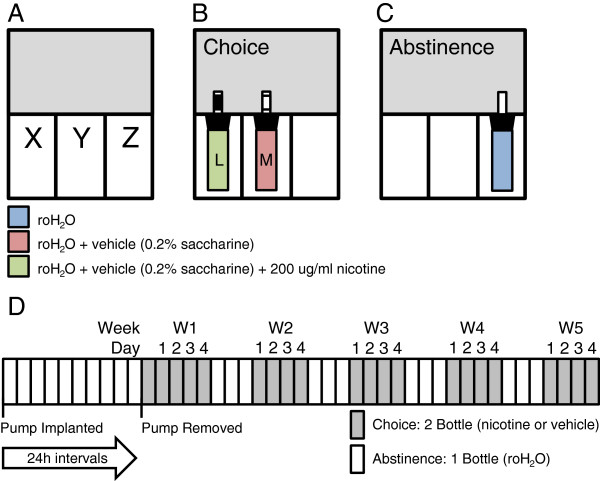Figure 1.

Two bottle-choice administration schematic and time frame. A) The wire cage top can be divided into three sections (X | Y | Z). B) During periods of choice mice are presented with bottles in X and Y, both of which contain roH2O and the vehicle: 0.2% saccharine. One bottle will contain 200 μg/ml nicotine (green) and the second will contain only vehicle (red). Lateral (X) or medial (Y) placement of the nicotine-containing bottle is randomized. The spout of each bottle is randomly labeled black or white as a visual cue to reduce nicotine consumption due to taste-testing. Food is placed in the unoccupied third of the wire cage top, Z. C) During abstinence, the mice are given a single bottle containing only roH2O (blue). It is placed in Z and the food is moved to X | Y. The spout of the abstinence bottle is unlabeled. D) Mice are implanted with osmotic pumps containing nicotine or saline, for ten days, with access to a standard laboratory diet and water. On day ten the pump is removed and the mice are subjected to periods of two bottle-choice (grey: 0.2% saccharine in roH2O containing either nicotine or vehicle), followed by 3 days of abstinence (white: 1 bottle containing roH2O). Cycles of choice and withdrawal continue for an additional 4 weeks.
